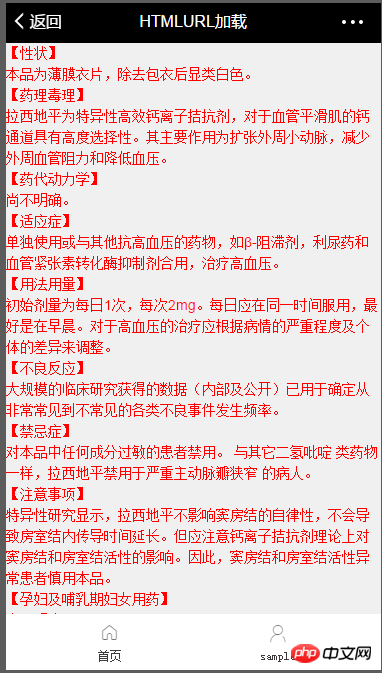前后端分离,后端提供了接口。但有一部分数据,比较产品说明文件,是存在其他的服务器上的。所以,在页面显示的时候,如果以页面内嵌的形式显示这个说明文件。需要搞点事情以达到想要的效果。本文主要和大家介绍VUE页面中加载外部HTML的示例代码,小编觉得挺不错的,现在分享给大家,也给大家做个参考。一起跟随小编过来看看吧,希望能帮助到大家。
转载地址:
http://www.php.cn/js-tutorial-386304.html
不同以往的IFRAME标签,那种方式比较Low,另外有其他的一些BUG。
本文思路是把HTML请求以来,以v-html的形式加载到页面内部。注册全局组件【v-html-panel】
1.HtmlPanel.vue文件
|
1
2
3
4
5
6
7
8
9
10
11
12
13
14
15
16
17
18
19
20
21
22
23
24
25
26
27
28
29
30
31
32
33
34
35
36
37
38
39
40
41
42
43
44
45
46
47
48
49
50
51
52
|
<template>
<p>
<mu-circular-progress :size=
"40"
v-
if
=
"loading"
/>
<p v-html=
"html"
></p>
</p>
</template>
<style>
</style>
<script>
export
default
{
// 使用时请使用 :url.sync=""传值
props: {
url: {
required:
true
}
},
data () {
return
{
loading:
false
,
html:
''
}
},
watch: {
url (value) {
this
.load(value)
}
},
mounted () {
this
.load(
this
.url)
},
methods: {
load (url) {
if
(url && url.length > 0) {
// 加载中
this
.loading =
true
let param = {
accept:
'text/html, text/plain'
}
this
.$http.get(url, param).then((response) => {
this
.loading =
false
// 处理HTML显示
this
.html = response.data
}).
catch
(() => {
this
.loading =
false
this
.html =
'加载失败'
})
}
}
}
}
</script>
|
htmlViewSample.vue
|
1
2
3
4
5
6
7
8
9
10
11
12
13
14
15
16
17
18
19
20
21
22
23
24
25
|
<template>
<p>
<v-html-panel :url.asyc=
"url1"
></v-html-panel>
<v-html-panel :url.asyc=
"url2"
></v-html-panel>
</p>
</template>
<style scoped>
p{color:red}
</style>
<script>
export
default
{
data () {
return
{
url1:
''
,
url2:
''
}
},
mounted () {
this
.url1 =
'http://file.xxx.com/group1/M00/0C/F5/xxxxxxxx.html'
this
.url2 =
'http://file.xxx.com/group1/M00/0D/3B/yyyyyyy.html'
},
methods: {
}
}
</script>
|
上一张效果图

注意事项:
直接使用axios处理的GET请求,需要处理跨域
外部的css样式会作用到显示的html
同时加载的外部html里的script也可能会执行,需要按需处理下
外部HTML文件内部的相对路径将不会被自动识别,绝对路径可以
NGINX跨域配置:
(Origin如果使用*的话,好像会出错,这里直接使用请求源的地址,如果担心安全性的话,可以用if+正则条件判断下)
|
1
2
3
4
5
6
7
8
9
|
location / {
add_header Access-Control-Allow-Origin $http_origin;
add_header Access-Control-Allow-Credentials true;
add_header Access-Control-Allow-Methods GET;
access_log /data/nginx/logs/fdfs_https.log main;
...
}
|